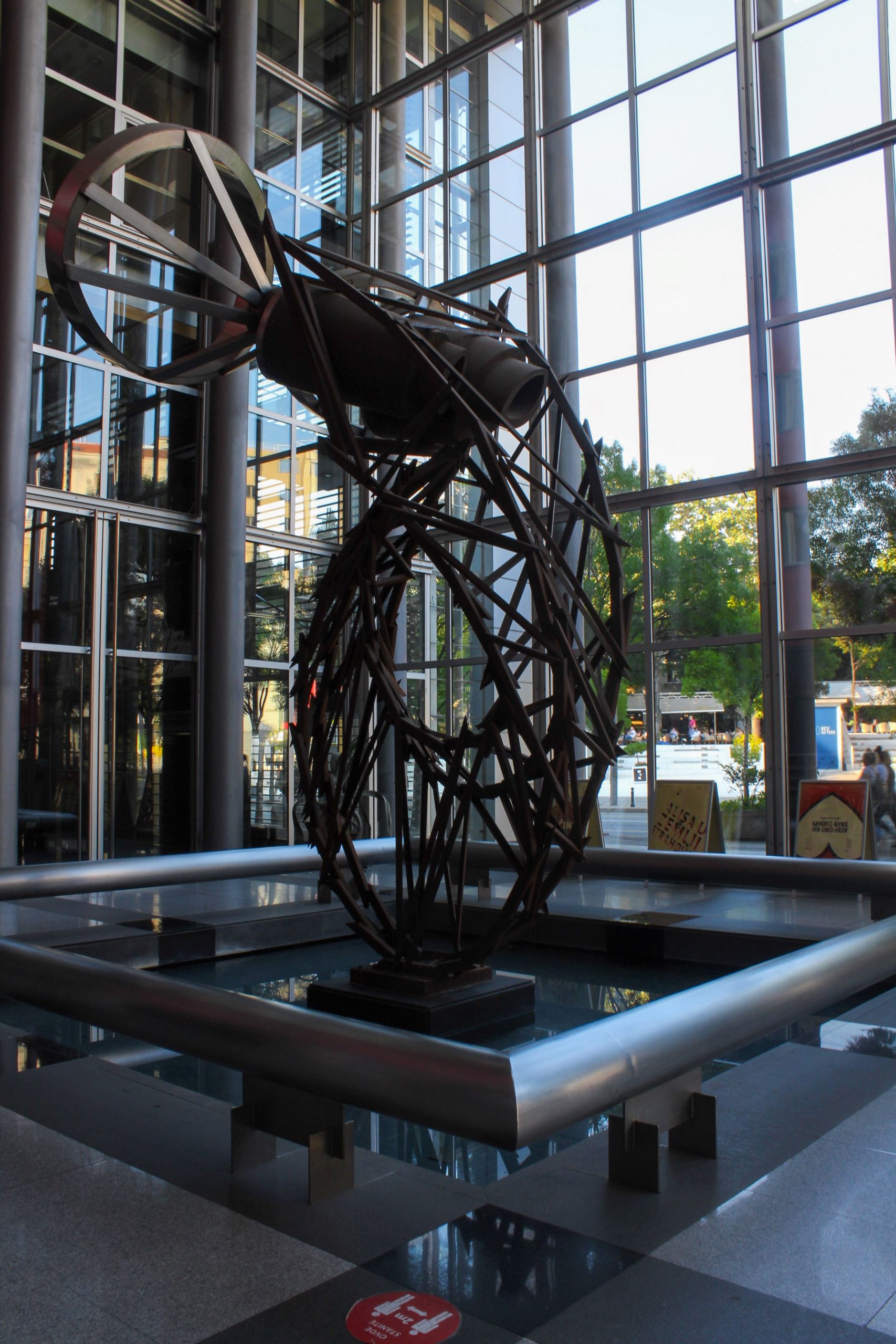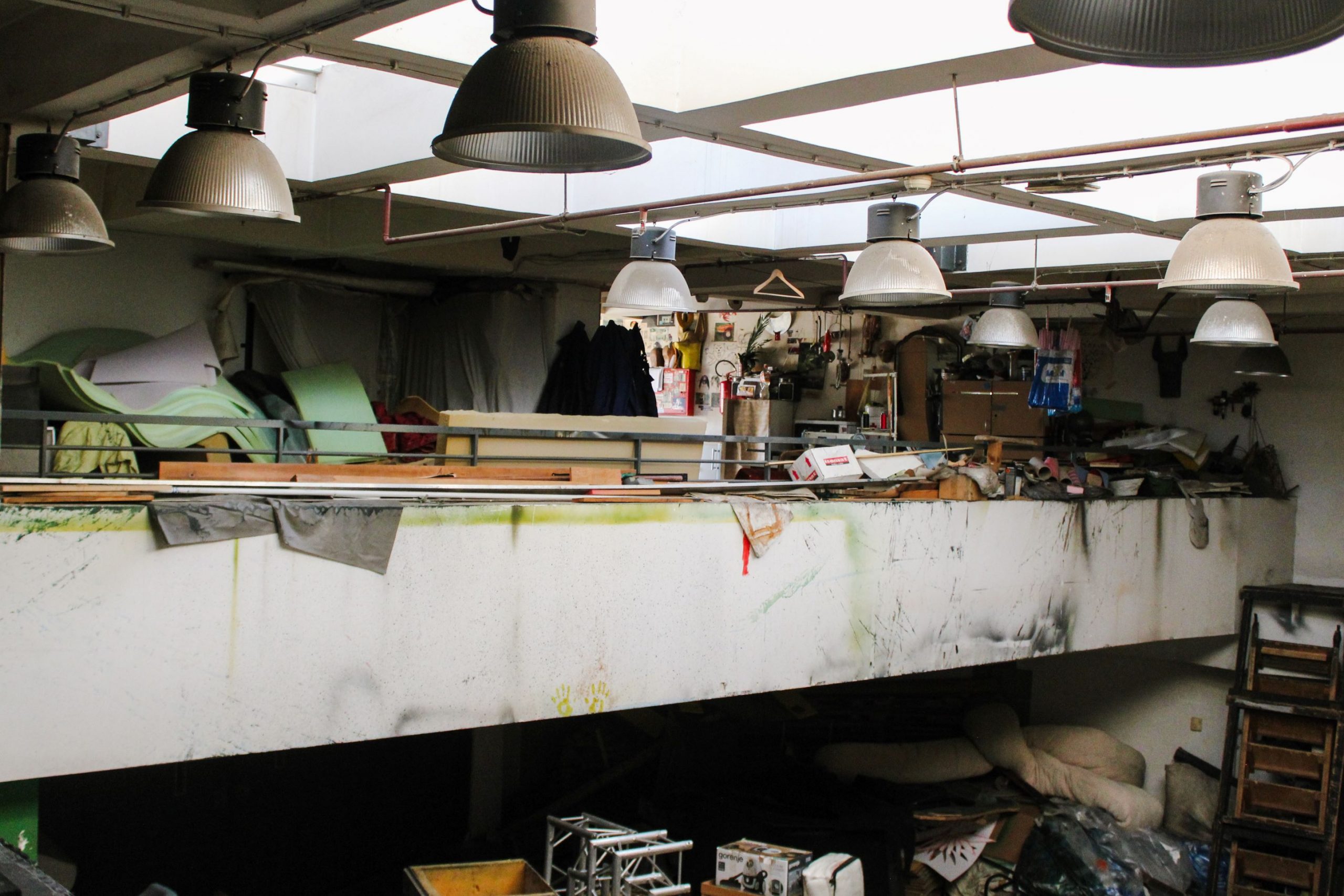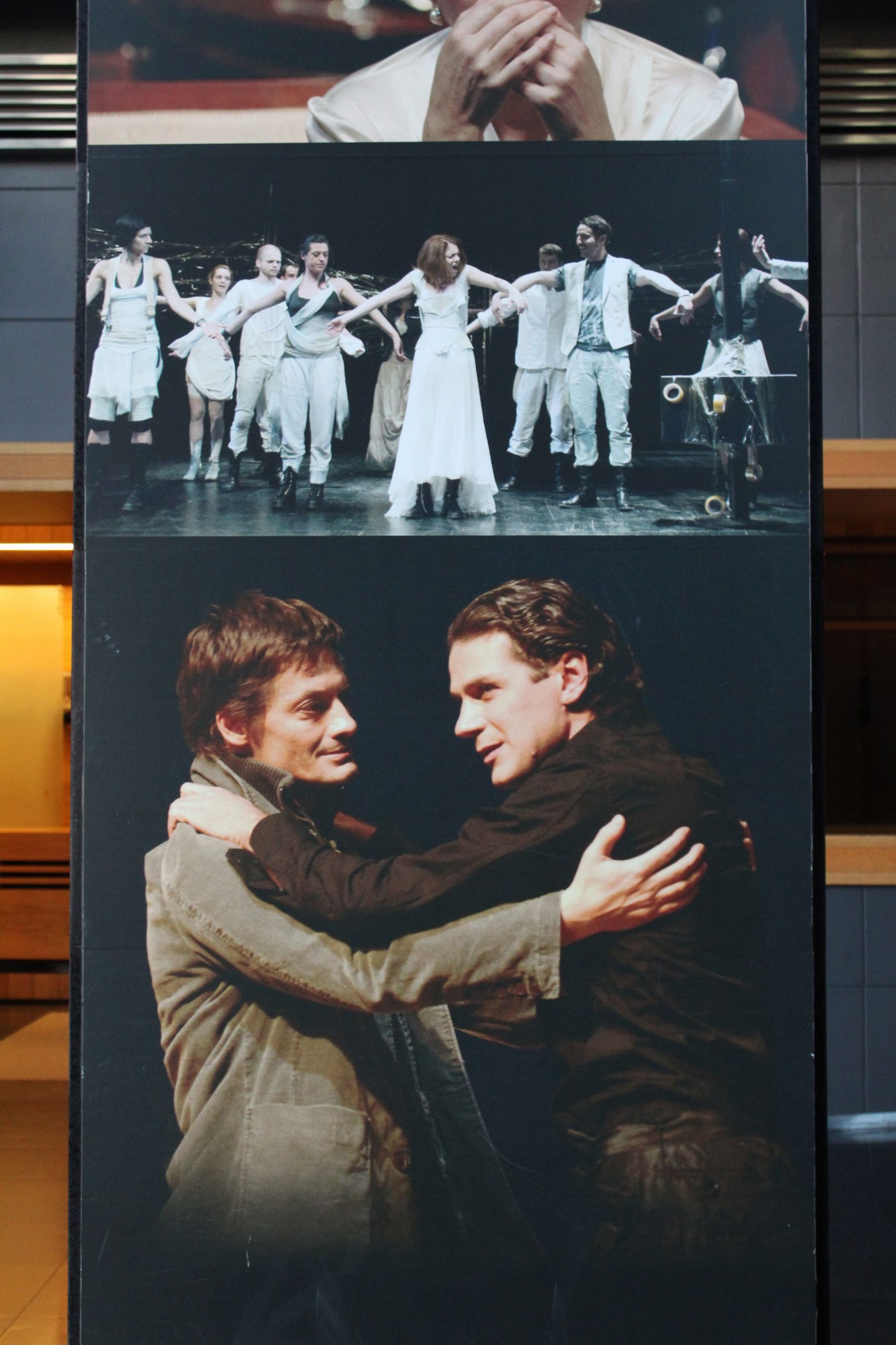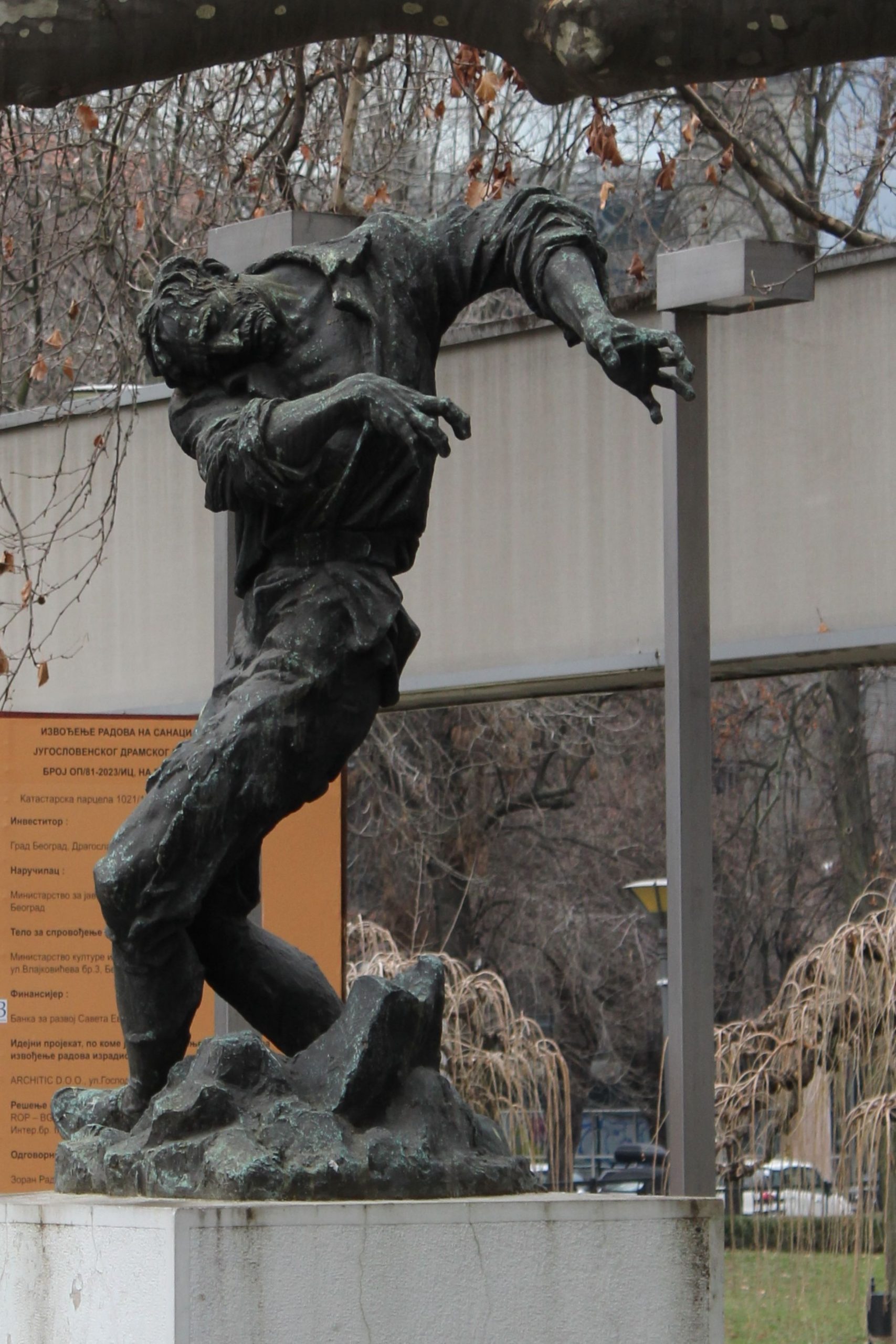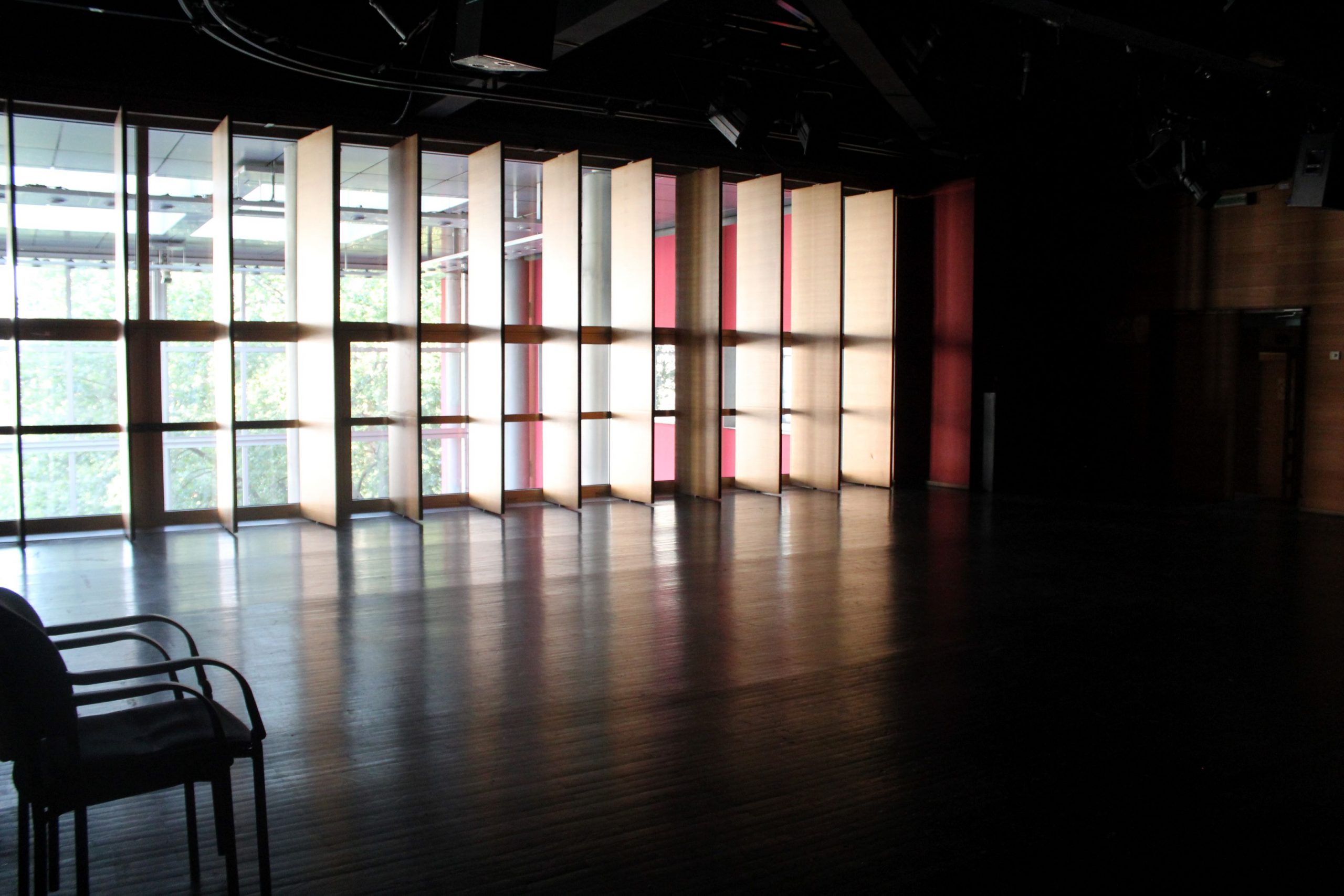WHERE IS IT ?
The building of the Yugoslav Drama Theatre (Jugoslovensko dramsko pozorište) is located at Kralja Milana Street 50, across from Cvetni Trg (Flower Square).
THE HISTORY
The present building of the Yugoslav Drama Theatre (Jugoslovensko dramsko pozorište) stands on the site of the former Court Manege, a stable and riding school used for training officers of the Principality of Serbia. It was constructed in 1867 during the reign of Mihailo Obrenović. In June 1914, the Manege building was adapted for the needs of the National Theatre, which underwent reconstruction. From December 1919, the National Theatre operated in this space, then simply called the Manege. Due to its wooden structural elements, the Manege caught fire in September 1927 and was completely destroyed.
After the fire, the construction of a new theatre began, initially planned as a large opera house. The renovated Manege building, designed by architects Vojislav Zađina and Nikola Krasnov, was an academic structure with 850 seats. It opened to the public on July 12, 1929. From 1931 to 1937, the Manege was temporarily used for the needs of the Assembly of the Kingdom of Yugoslavia.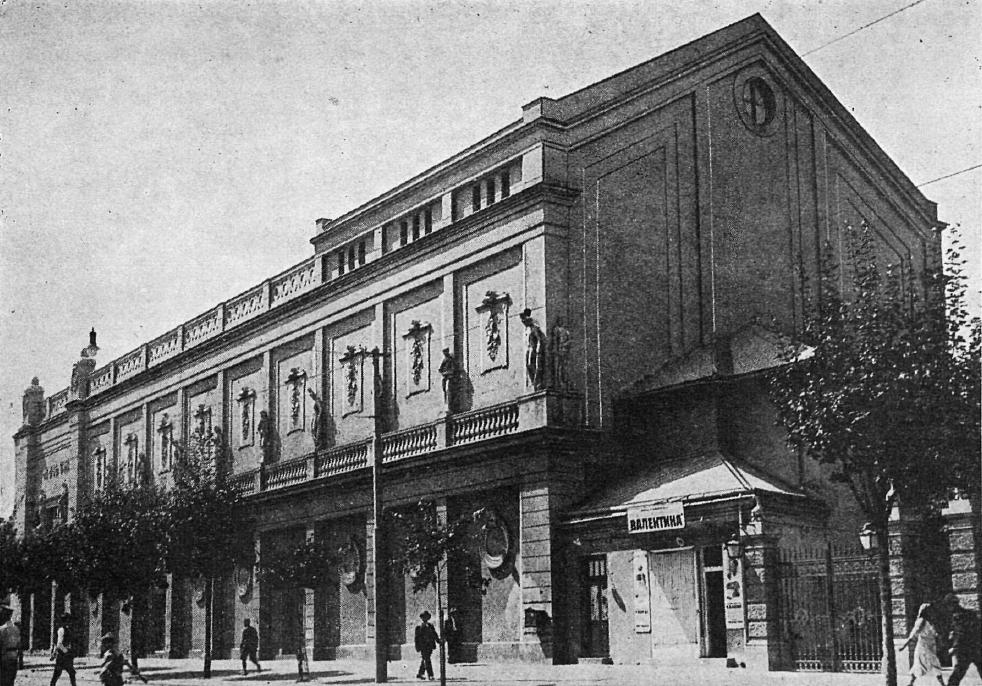
The Manjež building in the period from 1931 to 1937
The building underwent its third adaptation in 1937 and received a new name – Vračarsko pozorište. The theater functioned until the liberation in October 1944. After World War II, it was renamed Gradsko pozorište, and in 1947, the decision was made to establish the Yugoslav Drama Theatre (JDP).
In 1947, the building officially received its new name (and the well-known abbreviation JDP), along with a new modernist appearance featuring a simple facade. The theater building suffered a fire in 1997, after which it was reconstructed according to the project by architects Zoran Radojičić and Dejan Miljković.

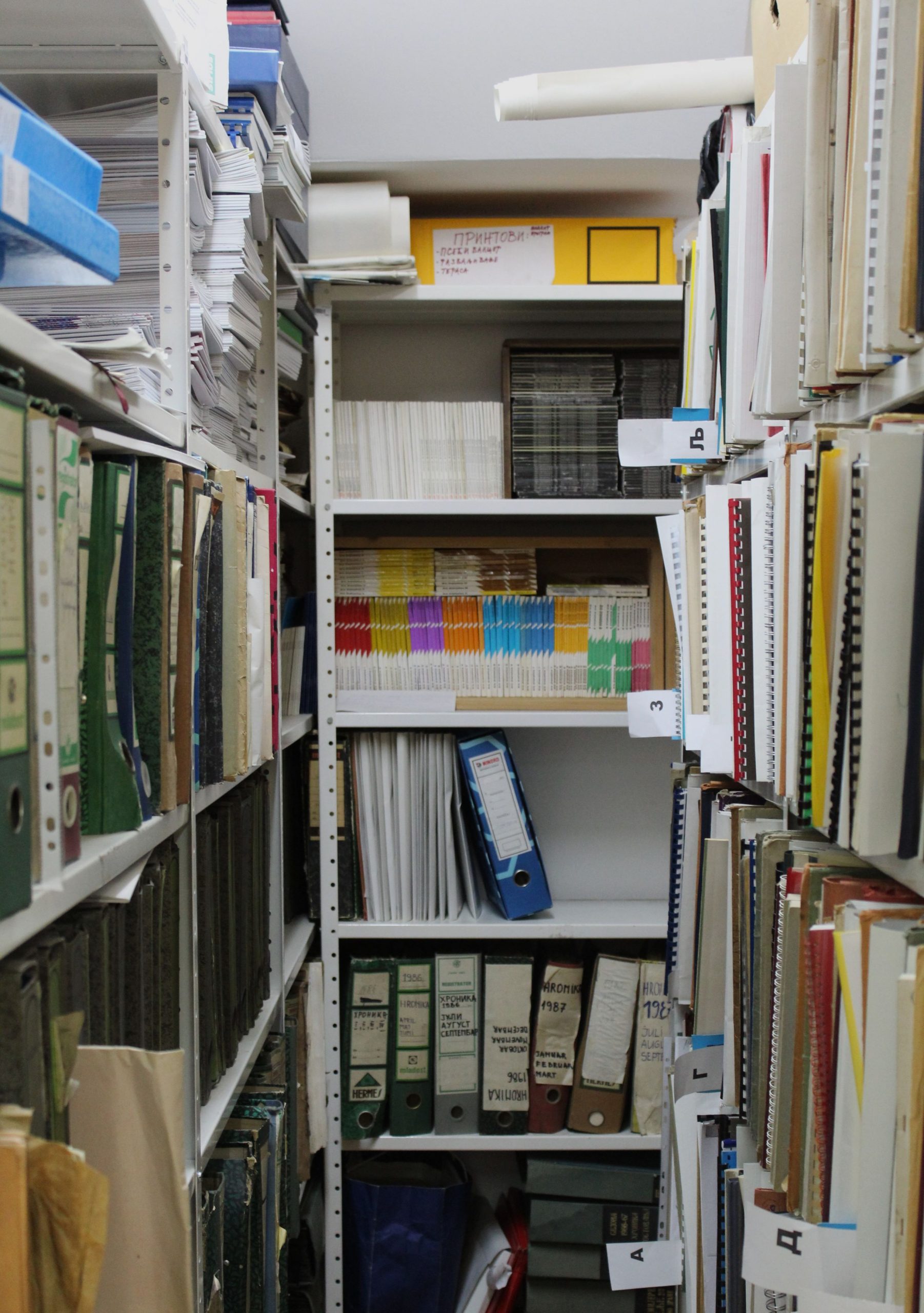
YUGOSLAV DRAMA THEATRE
The authorities of the Federal People's Republic of Yugoslavia (FNRJ) made a decision in 1947 to establish the Yugoslav Drama Theatre (Jugoslovensko dramsko pozorište or JDP). For the needs of the new theatre, the Manjež building was reconstructed, designed by the architect Momčilo Belobrk in collaboration with the Slovenian artist Bojan Stupica. In line with the stylistic ideas of modernism, the stylized facade by Nikolaj Krasnov was removed, and the building acquired a modernist appearance with a simple and unornamented facade and entrance porch.
The idea of founding the JDP originated from Bojan Stupica, who advocated for a project of a transnational Yugoslav theatre. His concept, "Elaborate on the Central Theater of the Federal People's Republic of Yugoslavia," proposing the establishment of JDP, was submitted to the authorities of FNRJ in 1946, and they accepted his proposal.
Director Bojan Stupica, in the foyer of the Yugoslav Drama Theatre
The first play at the Yugoslav Drama Theatre (Jugoslovensko dramsko pozorište or JDP), "Kralj Betajnove" by Slovenian writer Ivan Cankar, directed by Bojan Stupica, was performed on April 3, 1948. Many significant actors from Zagreb, Novi Sad, Sarajevo, Split, Ljubljana, and other cities in the former Yugoslavia were invited to participate in the creation of the theatre. Director Bojan Stupica was appointed as the artistic director of the theatre. In an effort to expand the theatre, Bojan Stupica designed and built the Small Theatre in the courtyard of JDP, which was named Theatre "Bojan Stupica" after his death in 1969.
Directors who gained fame for JDP during that time, Bojan Stupica, Mata Milošević, and Tomislav Tanhofer, were already influenced by European modernism in the interwar period. This spirit of international theatre continued in later times when Jovan Ćirilov took over the leadership of the theatre, creating a representative institution for contemporary stage expression.
In 1997, JDP was hit by a fire that destroyed the Main Stage and almost the entire building. The Main Stage was reopened on May 23, 2003, with the play "Rodoljupci" by Jovan Sterija Popović, directed by Dejan Mijač.
The wardrobe in JDP
The Yugoslav Drama Theatre (Jugoslovensko dramsko pozorište or JDP) stages works by world classics and domestic playwrights. It includes performances of contemporary works by both domestic and foreign authors. The theatre remains committed to the tradition of engaging significant artists from the former Yugoslavia, such as Dejan Mijač, Egon Savin, Paolo Mađeli, Slobodan Unkovski, Dušan Jovanović, Jagoš Marković, Gorčin Stojanović, Aleksandar Popovski.
Today, the Yugoslav Drama Theatre has three stages: the main stage "Ljuba Tadić," which accommodates 586 spectators, Theatre "Bojan Stupica," whose reconstruction is in progress, and Studio JDP for 112 spectators. Studio JDP, opened in 2004, is dedicated to chamber and experimental performances.
Photos featuring theater performances in the JDP
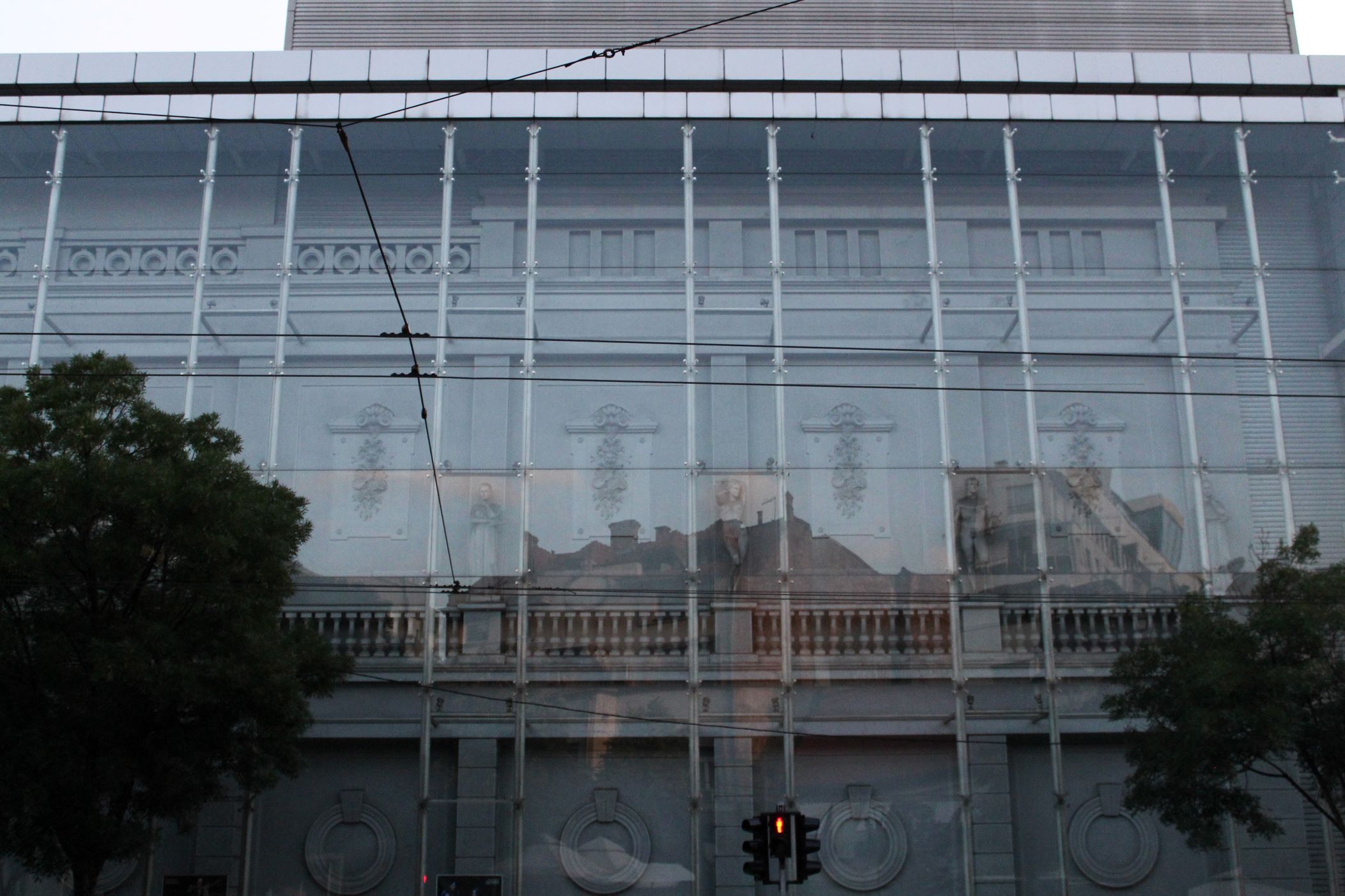
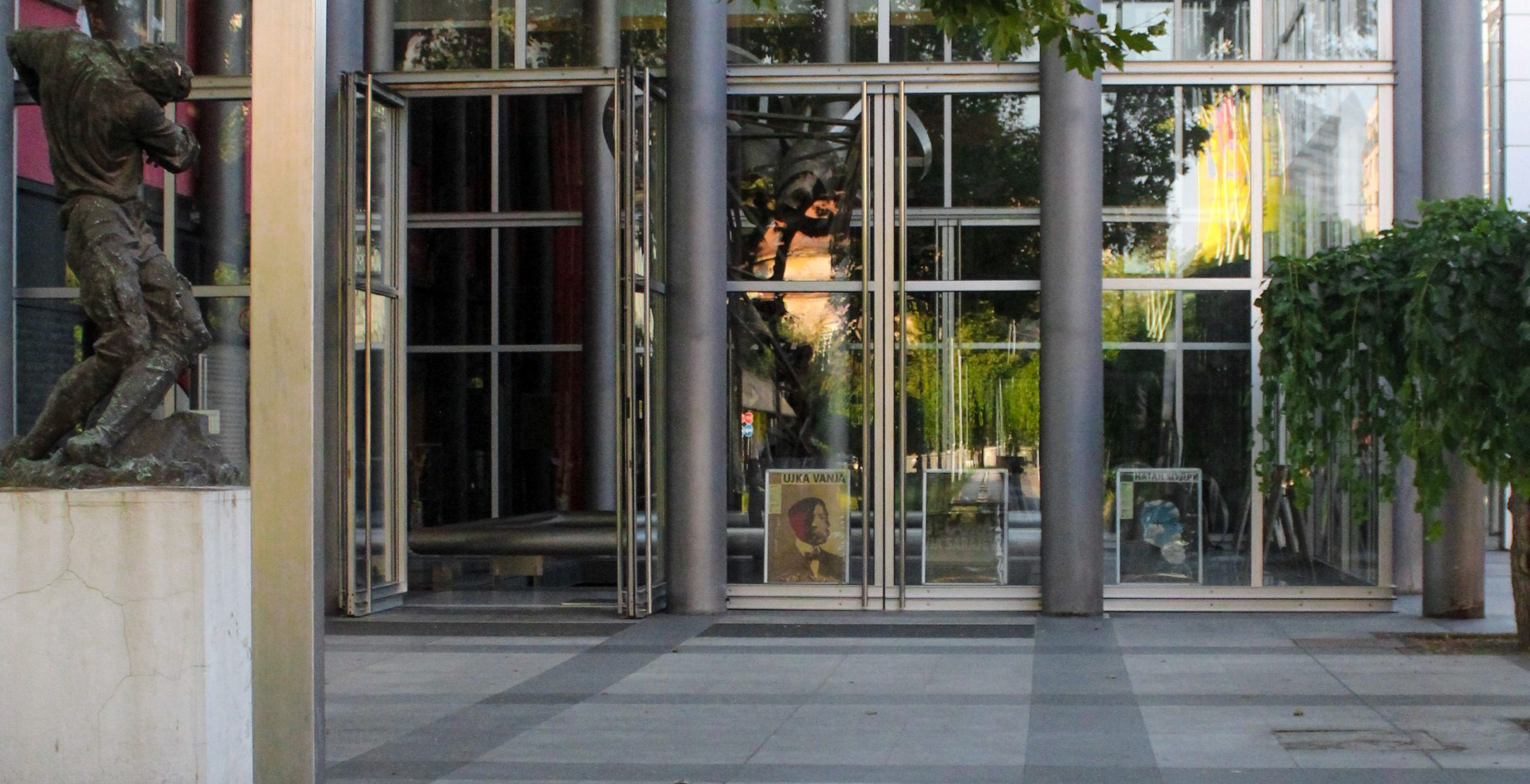

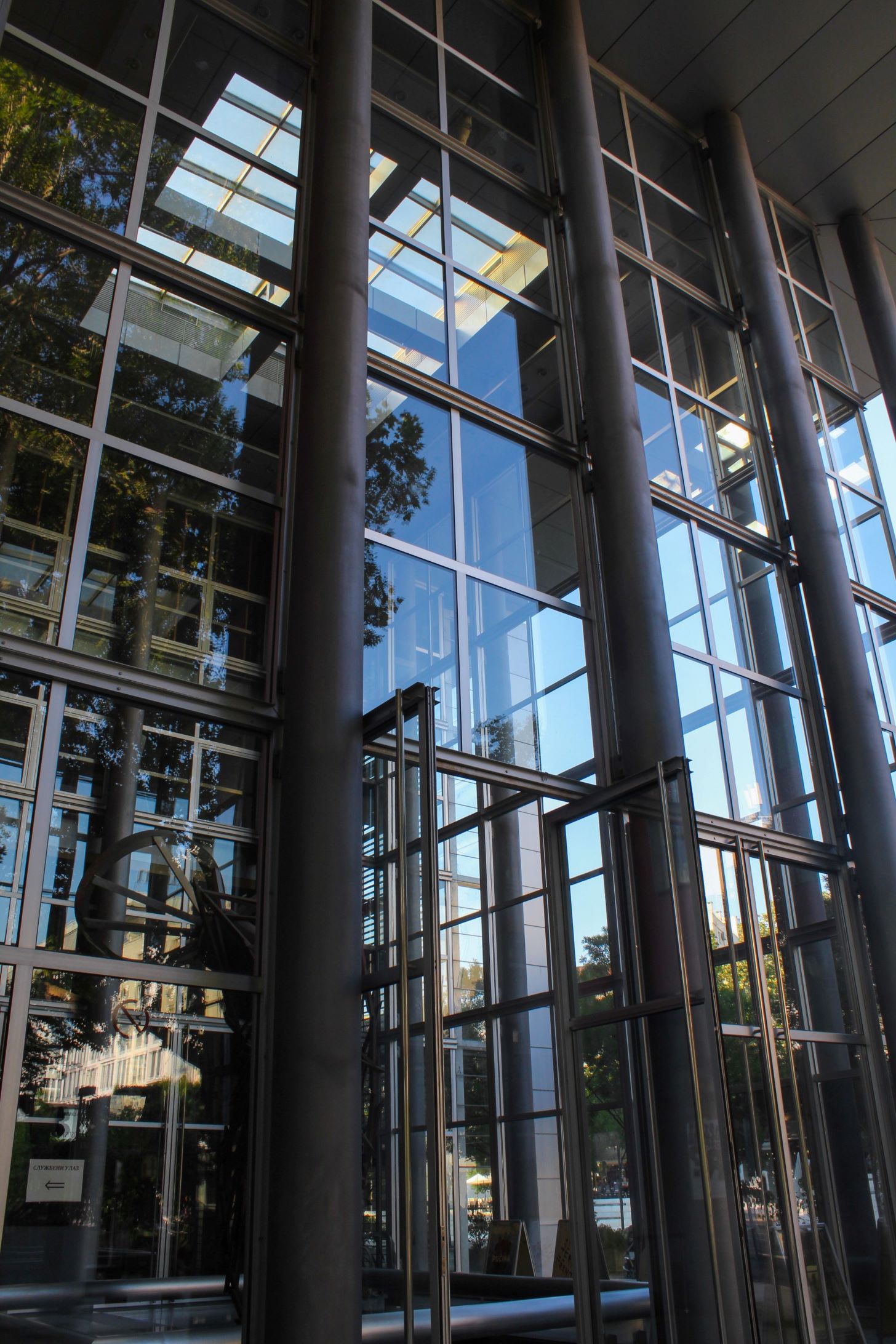


THE DESIGN
The theater building from 1929, designed by architects Vojislav Zađina and Nikolaj Krasnov, was constructed in the style of academism, and the facade was adorned with allegorical representations of literature, music, dance, drama, and comedy – sculptures crafted by sculptor Vojislav Šikoparija.
After the establishment of JDP, the appearance of the building underwent changes. Architect Belobrk introduced an atrium with a pool in the entrance area. In front of the entrance stands the sculpture "The Wounded" by Croatian sculptor Vanja Radauš from 1948.
In the lobby, a mosaic by Montenegrin painter Milo Milunović, titled "Girl with a Torch" from 1948, is displayed. The artist used actress Ana Krasojević, a member of the Humoristic Theater on Terazije, as a model for the "Girl with a Torch." After the 1997 fire that destroyed the Main Stage and almost the entire building, the mosaic was restored to its original position between the entrances to the stalls, where it had been since its inception.
In the 1980s, there was a new reconstruction by architect Đorđe Bobić, who uncovered a small part of Nikolaj Krasnov's original facade. Adding color to the facade introduced a postmodern style, and a fountain was added to the side of the building facing the Student Cultural Centre (SKC).
After the fire, the theater building was reconstructed according to the design by architects Zoran Radojičić and Dejan Miljković. The facade received a new look with the introduction of new materials such as glass and metal, completely altering its previous external appearance. A monumental sculpture by Mrđan Bajić was placed in the entrance area. Although Belobrk's entrance porch was retained, it was glazed and expanded to a height of about 10 meters.
In addition to the existing two stages – the main stage named after actor "Ljuba Tadić" (for 586 spectators) and the Theater "Bojan Stupica," whose reconstruction is in progress – the Studio JDP for 112 spectators on the upper floor was opened in 2004.
Written by Zoja Andrijanić
